Effects of microbes on animal behaviour
Evolutionary biologist Zenobia Lewis explains how microbes affect behaviour of large animals, including humans
EXAM LINKS
OCR A Transmission of pathogens
OCR B Pathogenic organisms
Pearson Edexcel B Other pathogenic agents
WJEC Eduqas The nervous system; Disease
Microbes are everywhere and do all sorts of things. They cause disease but can also prevent and cure it. They spoil food while also giving us cheese, bread and beer. They help us develop, grow, digest food, heal and reproduce.
In 1924, American scientists Marshall Hertig and Simeon Burt Wolbach noticed and described bacteria living in the reproductive cells of mosquitoes. It was many years later that the significance of these bacteria, Wolbachia pipientis, came to be understood.
In 1971, Janice Yen and A. Ralph Barr discovered that some female mosquitoes that mated with Wolbachia-infected males were unable to produce viable eggs. Further investigation discovered that the problem lay with uninfected females mating with infected males. Something in the infected male sperm was damaging the eggs, but infected females were not affected. Most females mate with many males, so the consequence of this is that on average, infected females produce more viable offspring than uninfected females. This increases the proportion of Wolbachia in the population, a good thing for the parasite.
Wolbachia in other organisms
Wolbachia does all manner of strange things to host reproduction that furthers its own transmission and it is found in many arthropods, not only insects.
Wolbachia can only be transmitted from one generation to the next via a female host’s eggs. Eggs are large and nutritious, so there is plenty of space and resource for the bacteria. Sperm are little more than DNA with a tail – there is no room for the parasite in male germ cells. The species has evolved in a way that has maximised the chances of it ending up in a female host. It does this in some quite extraordinary ways.
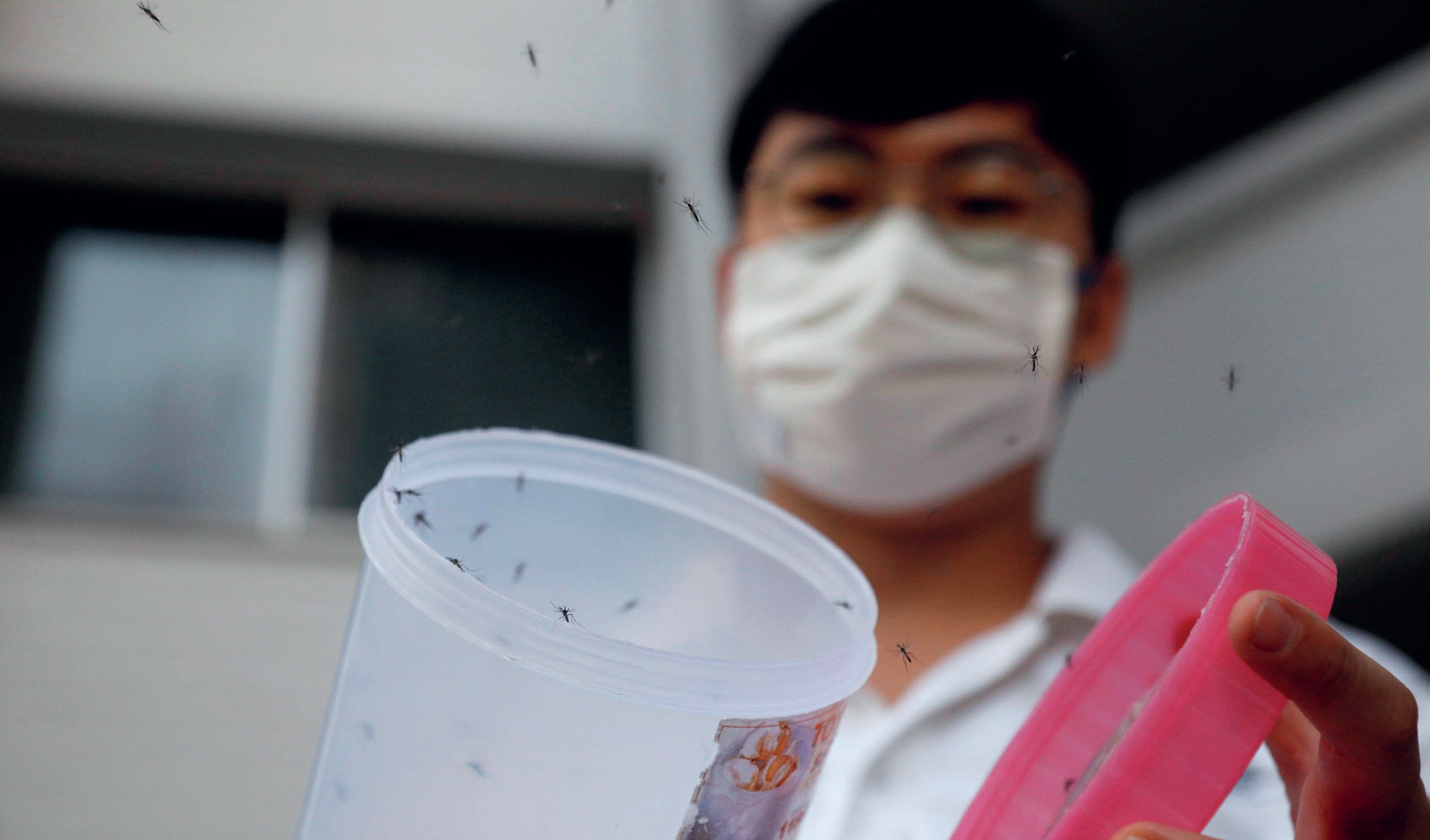
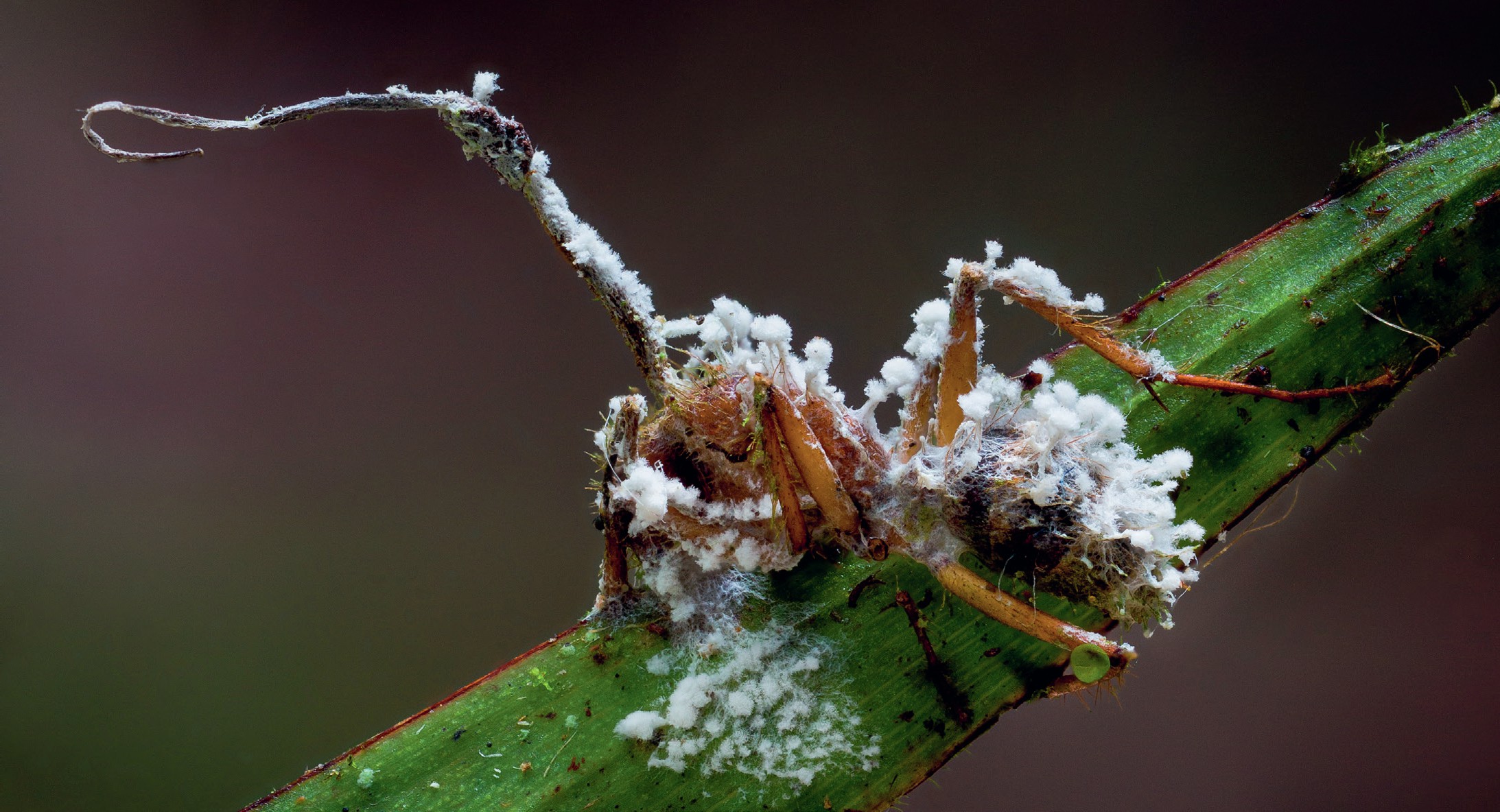
In ladybirds, for example, Wolbachia kills off any male offspring early in development. We are still not sure how, but it is thought to relate to the sex-determination system. If a female is infected, she will produce a normal brood of female and male eggs, but Wolbachia in the males causes them to die, so that only female eggs hatch and develop. Fewer males in the population increases the likelihood of an infected ladybird being a female.
In some crustaceans, including woodlice, Wolbachia causes a similar population bias, but by turning males into females. Again, this is thought to be due to Wolbachia disrupting the sex-determination system, by disabling one of the key glands that produces male hormones. In this process, called feminisation, infected male young develop into adults that look, act and reproduce like females – meaning more transmission for the parasite. With these ways to spread, it is perhaps unsurprising that some studies suggest up to 95% of all insects could be infected with Wolbachia.
Microbial mind control
Many microorganisms found in or on other animals can alter their host’s behaviour. Fungi in the Cordyceps and Ophiocordyceps genera, for example, have been nicknamed ‘zombie fungi’, and for good reason. On infecting an insect host, the fungus induces a loss of appetite, restlessness and clumsiness. The host then climbs to a high point in nearby foliage, latches on and dies (see photo above). We are still not sure how the fungus does this, but it has been suggested that it disrupts the circadian rhythm of the host in some way.
Whatever the mechanism underpinning the behaviour, the elevated position of the dead host allows development of the fungus until a sprouting body bursts forth, showering any uninfected insects below with spores. Thus, the fungus gets to propagate further. Some host species have evolved behaviours that counteract the action of the fungus. Some species of carpenter ants, for example, will move infected individuals far away from the colony before they have a chance to start their climb.
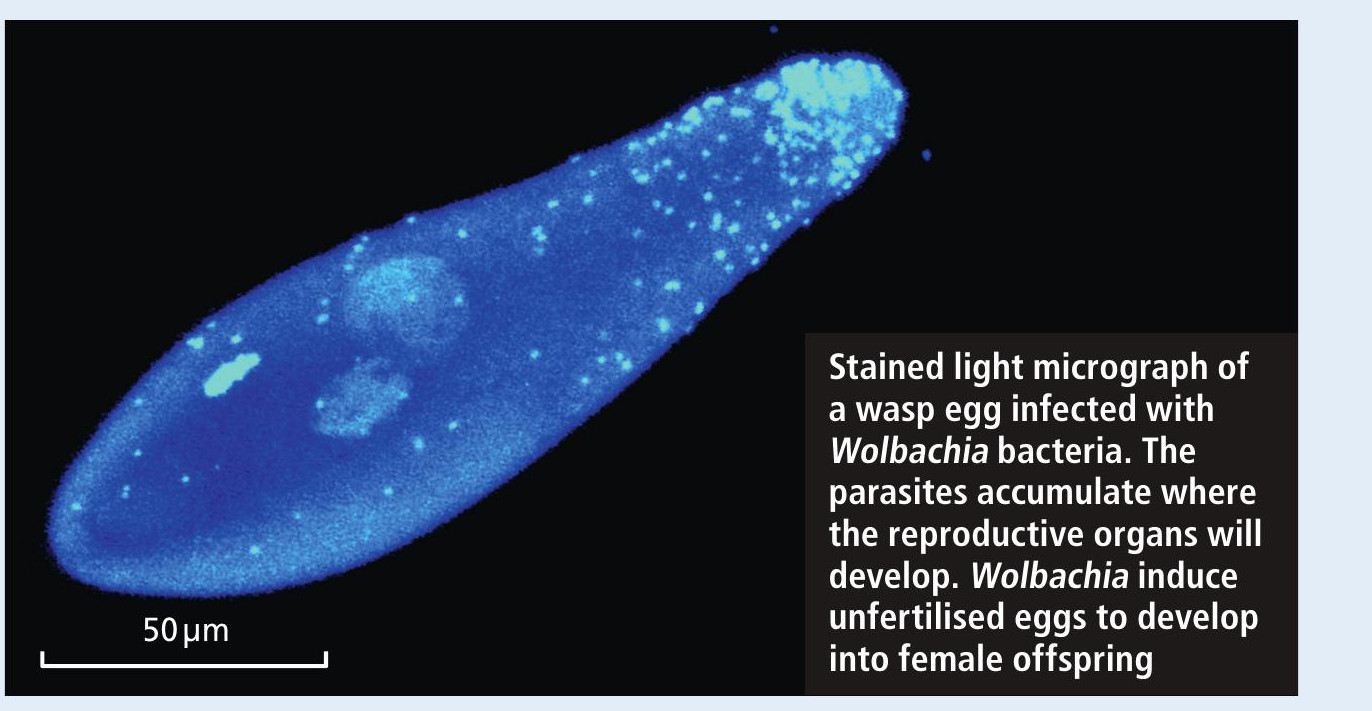
Box 1 Just So Stories
Rudyard Kipling, author of The Jungle Book, wrote a series of children’s stories called the Just So Stories. Evolutionary biologists sometimes refer to Just So Stories when referring to things in evolutionary biology that almost seem too good to be true – outcomes that just seem to fit a given narrative. A classic example is that of the giraffe’s long neck. Prior to Charles Darwin’s work on natural selection, Lamarck suggested that giraffes stretched their necks to reach leaves, and they passed the instructions for a stretched neck on to their offspring. Now we know that young giraffes born with long necks, as a result of random gene mutations, would have been more successful at feeding, and produced more offspring that will have inherited the favourable alleles of their parents. So more long necks would occur in a given population over time – the process of evolution by natural selection.
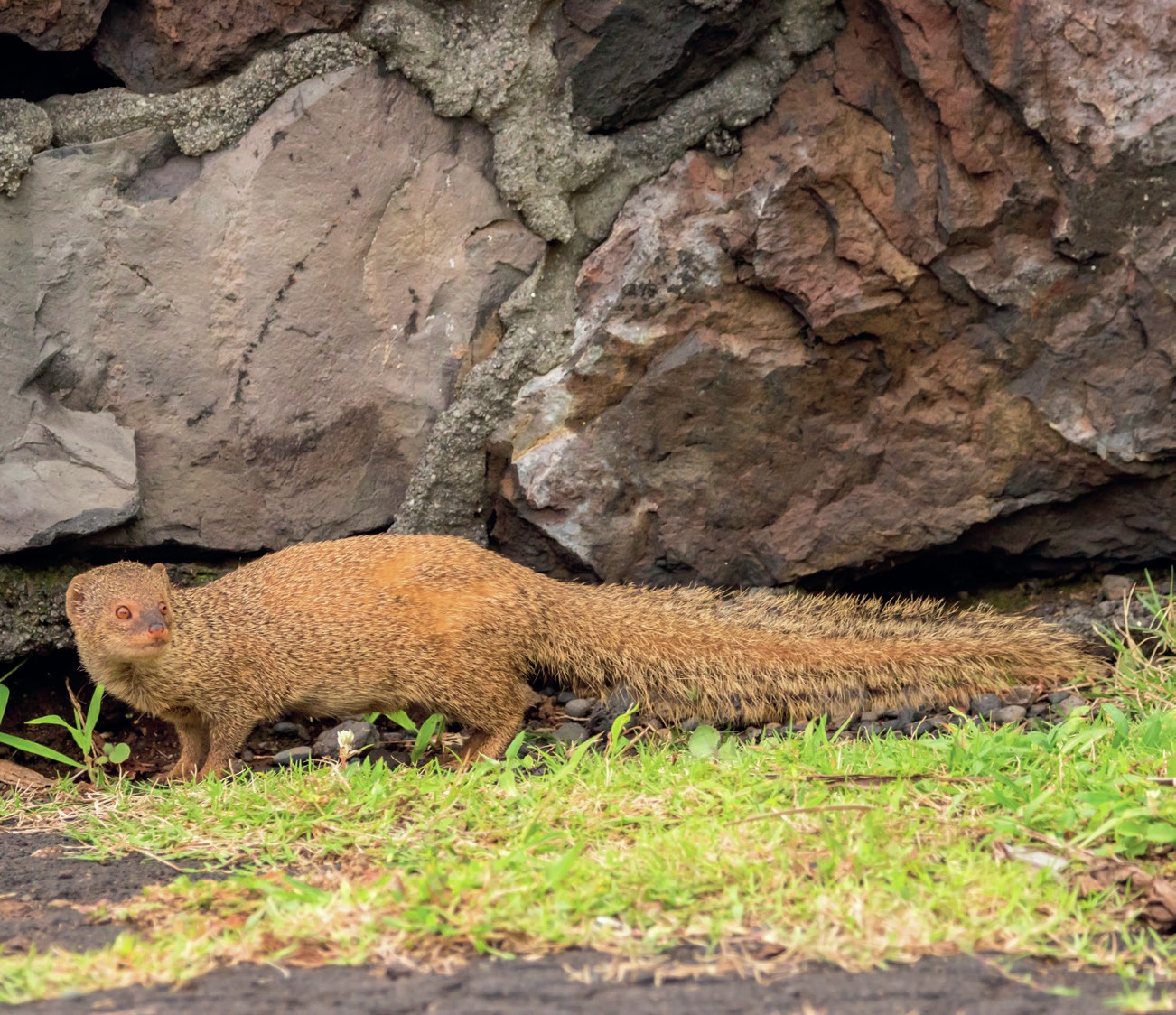
Benefits?
It seems obvious that there is a benefit to the microorganisms in these examples, as they get to reproduce. But it is not enough for it to seem like there is a benefit – these examples could be what evolutionary biologists call Just So Stories (see Box 1) where the advantage makes sense, but we did not, or cannot, test the explanation.
In the 1990s, Robert Poulin gave us a framework by which we could assess whether microbeinduced behavioural manipulations had evolved through natural selection. He suggested that such interactions should increase the fitness of the microbe or the host, and that similar interactions should be seen in unrelated species.
Although it might seem so from the examples given above, these interactions are not always one way, and the host does not always suffer. In some cases, microbes are beneficial to the host. Microbes can be beneficial in terms of host development and physiological processes such as digestion. Termites, for example, eat wood, but can only digest it thanks to the bacteria in their gut, which break down cellulose.
It seems microbes can be beneficial to behaviour too. Many animals use odour in communication, to identify who is and is not a relative, and who might be a good mate. In mammals, many of the odours used to make such decisions are made by bacteria living in and on them. For example, the small Indian mongoose, Herpestes auropunctatus, has pockets either side of the anus that contain some pretty smelly secretions, which are produced by bacteria in the pockets. Mongooses recognise each other based on the smell of these secretions. This effect of bacteria on mongoose behaviour was first studied in the 1970s, and since then, similar interactions have been found in a variety of mammals, including baboons, hyenas and chimpanzees.
Effect of microbes on human behaviour
Is there any evidence that microbes can induce extreme behaviour in humans, as happens with the fungus? There is the curious case of Toxoplasma gondii (see BIOLOGICAL SCIENCES REVIEW Vol. 34, No. 4, pp. 12–15). Toxoplasma is a single-celled parasitic protoctist found in many warm-blooded animals. However, the reproductive phase of its life cycle (see Figure 1) occurs in cats. Here, it produces its eggs, which are shed in cat faeces and thereby potentially transported into a new host organism.
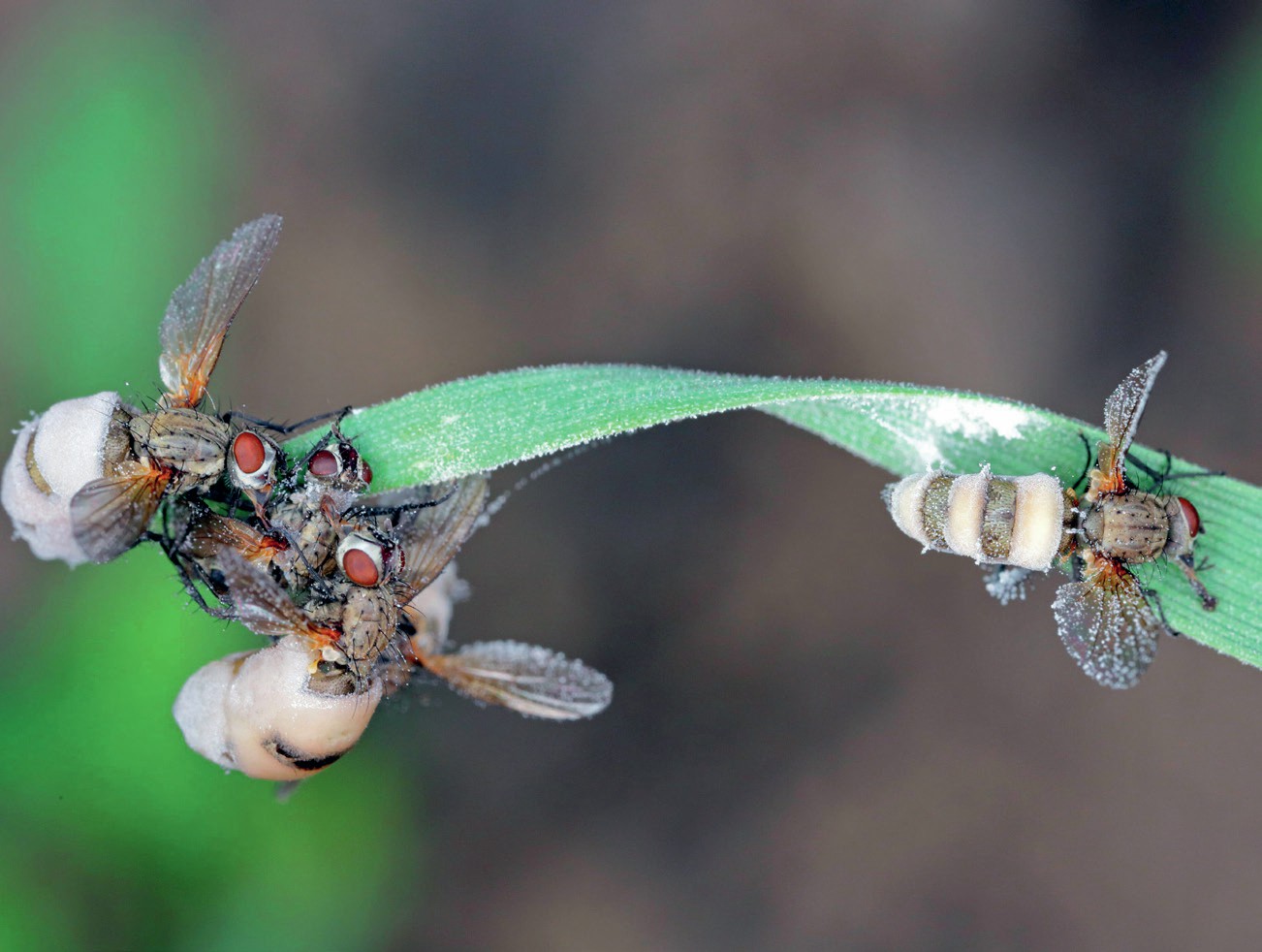
While that new host could be another cat, it is more likely to be an intermediate host – astepping-stone organism before the parasite reaches the next cat – and here is where the interesting behaviour happens.
Intermediate hosts are often rodents such as rats and mice, and when infected by the microbe, their behaviour switches from risk-averse to risky. Ordinarily, rodents avoid cats – the sensible course of action – but if infected, they actively seek cats out. If the rodent is eaten, the parasite is transferred to its primary host, the cat, and the life cycle begins again.
Humans can also be infected by Toxoplasma and, intriguingly, there is some evidence that the parasite affects them in a similar way to rodents. Infected individuals have been shown to exhibit more risky behaviour, and have slower response times. The parasite has even been implicated in the likelihood of humans being involved in car crashes. A study of Istanbul residents showed that drivers involved in serious car crashes were more likely to show evidence of Toxoplasma infection than individuals that had never been in a car crash.
Future directions
Research into the effects of microbes on host behaviour is still relatively new. Only in the last 20 years have molecular and microbiological techniques become sensitive enough to be able to detect, culture and study microorganisms of potential interest. We have a long way to go to fully understand some of these relationships, let alone the mechanisms that underly them. What are the microbes doing to those plant-climbing ants for example? Remarkably, none of these microbes are acting in isolation. We live in a microbial world, with over 10 000 microbial species found in and on each individual human. How do these microbes interact with each other, and what is that doing to us and our behaviour?

One thing is certain – there is huge potential in understanding the impacts of microbes in the world around us. Already, the disruption caused by Wolbachia to mosquito reproduction is being harnessed to try to control the spread of mosquitoes, which are the main transmitters of malaria. Following studies in mice, a new, albeit somewhat controversial, line of research is investigating whether manipulation of human gut microbes can affect mood and therefore be used to improve mental health. Who knows where the study of microbes and animal behaviour will take us next?
Things to discuss
■ What other impacts might microbes have on human behaviour?
■ What examples are there of microbes operating – positively or negatively – in plants?
RESOURCES
More about Wolbachia from the National Environment Agency Singapore:
https://www.nea.gov.sg/corporate-functions/ resources/research/wolbachia-aedes-mosquitosuppression-strategy
‘“Zombie” parasite takes over insects through mind control’, National Geographic: www.youtube.com/watch?v=vijGdWn5-h8
Everts, S. (2021), ‘Smell you later: the weird science of how sweat attracts’, The Walrus.
Zimmer, C. (2002), Parasite Rex, Simon & Schuster Ltd.
PRACTICE EXAM QUESTIONS
1 Compare and contrast the effect of infection by Wolbachia on ladybird and woodlice populations. [3 marks]
2 Explain why scientists expected the release of Wolbachia-infected male mosquitoes would reduce the mosquito population in Singapore. [3 marks]
BiologicalSciencesReviewExtras
Go online for the answers at www.hoddereducation.co.uk/bioreviewextras
KEY POINTS
■ All animals play host to thousands of microbe species on and inside their bodies.
■ While microbes have known effects on host physiological processes, recent research suggests they can also have consequences for behaviour.
■ Through understanding these impacts, there is the potential to harness them to our benefit.





